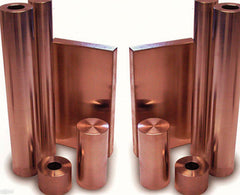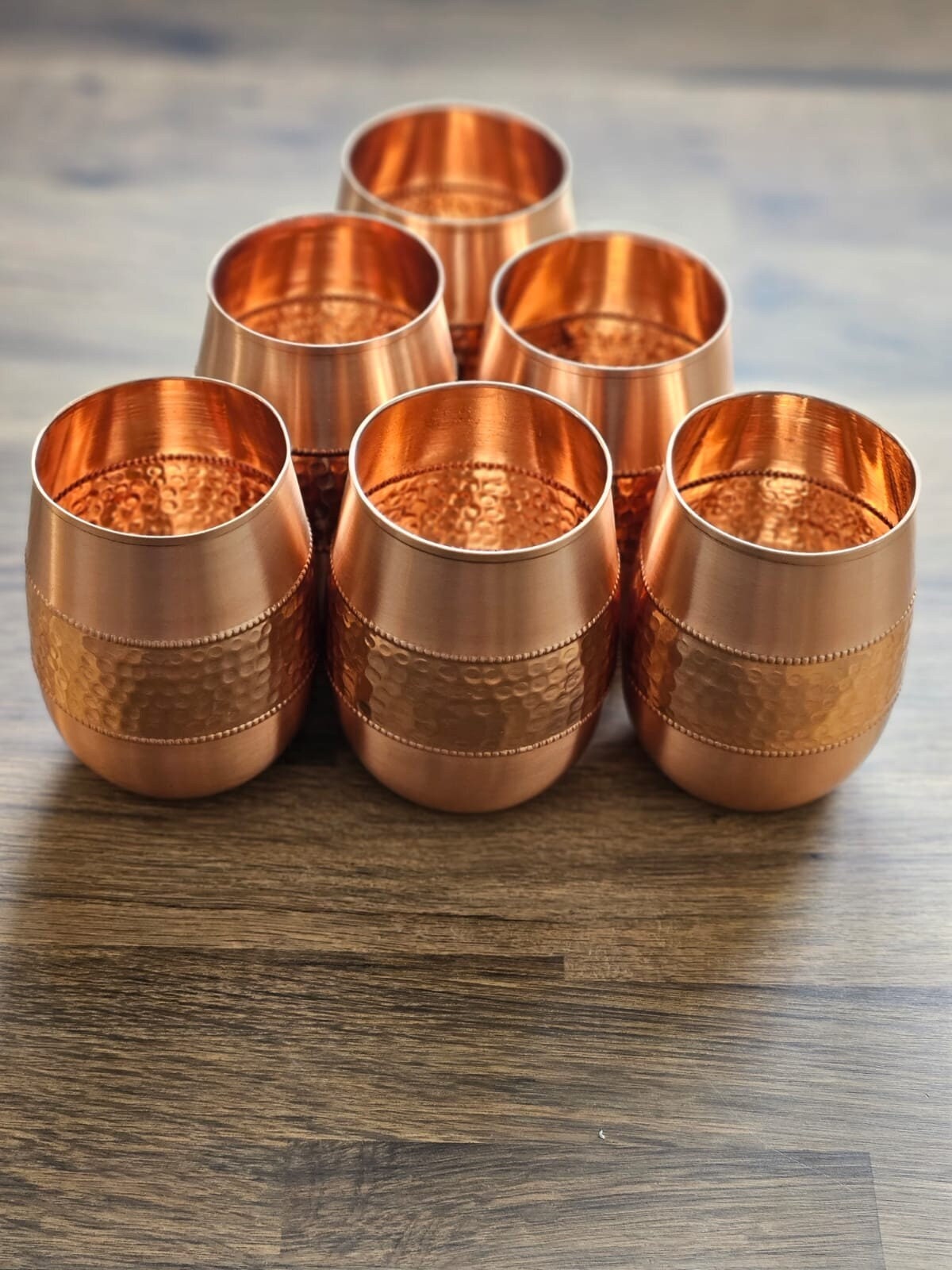From Art to Capability: The Many Applications of Special Copper Products
From Art to Capability: The Many Applications of Special Copper Products
Blog Article
Exactly How Copper Products Add To Lasting Practices in Various Industries
In renewable power systems, for example, copper boosts the functionality of solar and wind innovations, while its application in construction lessens waste with longevity. As markets seek to take on more sustainable methods, the role of copper could prove crucial in attaining environmental objectives.
Copper in Renewable Resource
Copper plays a vital duty in the development of renewable resource innovations, working as a crucial conductor in various applications. Its exceptional electric conductivity and resistance to rust make it an ideal product for electrical circuitry, which is essential in photovoltaic panels, wind turbines, and energy storage systems. In solar photovoltaic systems, copper is made use of in the affiliations and circuitry, enabling effective power conversion from sunlight to electricity.
In wind power, copper is important to the generators and transformers that transform kinetic energy right into electrical power, making sure ideal efficiency and dependability. Furthermore, the need for electrical lorries (EVs) is boosting, with copper being a vital part in batteries, electric motors, and charging framework. The change to EVs considerably boosts the need for copper, as these automobiles commonly utilize 4 times much more copper than standard inner combustion engine vehicles.
As the world seeks to mitigate climate modification and change to sustainable energy resources, copper's function becomes increasingly important. The material not only enhances the performance and resilience of renewable energy systems yet likewise sustains the more comprehensive goal of decreasing greenhouse gas discharges and promoting a lasting future.
Eco-Friendly Building And Construction Products
In the last few years, there has actually been a remarkable shift in the direction of the adoption of environment-friendly building materials in action to growing ecological issues. This modification is motivated by the demand for sustainable options that minimize ecological impacts while maintaining architectural integrity and visual appeal.
Copper, known for its durability and recyclability, has actually become a key gamer in this industry. It can be made use of in roofing, plumbing, and electrical systems, contributing to energy efficiency and lowering waste. Copper's longevity suggests fewer replacements over time, additional enhancing its sustainability profile.
Furthermore, products such as bamboo, reclaimed timber, and recycled steel are getting popularity. These choices not only use reduced environmental effect but additionally promote resource preservation. As constructing codes increasingly stress sustainability, contractors and designers are incorporating these materials into their jobs, promoting technology in style.
The increasing adoption of eco-friendly construction products shows a wider commitment to sustainability in the built atmosphere. By focusing on these materials, the building market can dramatically decrease its carbon footprint, straighten with governing standards, and support a much healthier environment for future generations. This pattern marks a critical action in the direction of an extra lasting future in building and construction.
Copper's Function in Health care
Current studies have highlighted the substantial duty of copper in healthcare setups, especially due to its antimicrobial residential properties. Copper surface areas have been revealed to reduce the visibility of pathogens, consisting of bacteria and infections, by as much as 99.9% within a short period. This exceptional efficacy makes copper a vital material for high-touch surfaces in healthcare facilities, such as doorknobs, bed rails, and IV poles, thereby adding to boosted infection control measures.
Along with its straight antimicrobial effects, copper also plays a role in the broader context of healthcare facility sustainability (Copper Products). By incorporating copper into clinical devices and home furnishings, healthcare centers can minimize the incidence of healthcare-associated infections (HAIs), which not only boosts individual outcomes yet likewise lowers the prices linked with extensive healthcare facility stays and extra treatments
Furthermore, copper's longevity and recyclability line up with lasting techniques, enabling responsible source management. As medical care systems significantly prioritize both individual safety and security and environmental stewardship, the integration of copper products is coming to be more widespread. This twin advantage highlights copper's crucial payment to a healthier, more secure, and more lasting health care setting.
Sustainability in Transportation

Moreover, copper's toughness and rust resistance add to the long life of transportation facilities (Copper Products). In rail systems, for example, copper parts improve the dependability and performance of signaling and power systems, essential for decreasing delays and power consumption. In addition, copper's duty in renewable power systems, such as solar and wind, sustains sustainable transportation services by offering clean power for electric transit choices
Investments in copper innovation not just foster sustainability yet also promote economic growth and job creation in green industries. As industries strive to satisfy rigid environmental policies, the application of copper items in transportation becomes a critical strategy in accomplishing sustainability objectives and advertising a cleaner, extra reliable future.
Copper and Circular Economic Situation
As the globe progressively welcomes sustainability, the role of copper in the circular economic climate comes to be ever more substantial. Copper's inherent residential properties-- such as its conductivity, recyclability, and longevity-- setting it as an essential product in a resource-efficient economic climate. The circular economic situation aims to minimize waste and make best use of source use with recycling and reusing products, and copper master this regard.
The metal can be recycled forever without loss of top quality, making it an optimal prospect for sustainable techniques throughout various industries, including building and construction, electronics, and renewable energy. By reprocessing and recouping copper from end-of-life items, markets can significantly decrease the demand for virgin materials, thereby lowering environmental influences linked with mining and handling.
Additionally, the integration of copper right into circular economic situation structures not just conserves sources but additionally cultivates development. Companies that focus on copper recycling add to an extra sustainable supply chain, improving their competition while aligning with regulatory demands and consumer preferences for eco liable products.
Final Thought
Finally, copper items significantly contribute to lasting methods across multiple industries. Their important role in improving eco-friendly power technologies, promoting green building and construction materials, supporting infection control in healthcare, facilitating sustainable transport, and embodying the concepts of a circular economy highlights the versatility and significance of copper. By incorporating copper into different applications, industries can achieve greater effectiveness, decrease environmental impact, and line up with international sustainability goals, inevitably promoting an extra lasting future.

Copper's you can try these out outstanding conductivity makes it a favored material in electrical automobile (EV) systems, boosting power performance and performance. In addition, copper's duty in sustainable power systems, such as solar and wind, sustains lasting transportation services by giving clean power see this here for electric transportation alternatives.
Their important function in boosting renewable power technologies, advertising green building products, sustaining infection control in medical care, assisting in lasting transport, and embodying the principles of a circular economic situation emphasizes the flexibility and importance of copper.
Report this page